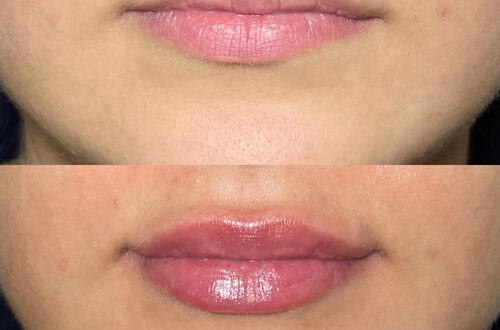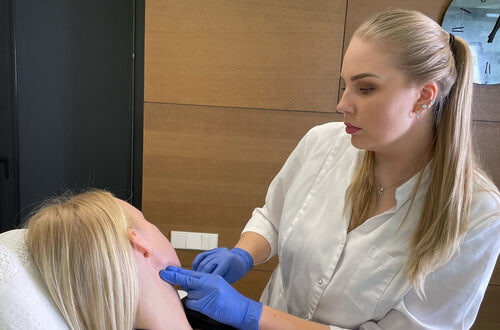Reserve Your Dermal Filler Consultation with Dr. Laura Geige at It’s Me and You Clinic
Pre-Flight Preparations
The waiting period after lip filler injections before flying is a crucial consideration for individuals who require air travel.
In order to ensure safe and successful air travel, it’s essential to understand the pre-flight preparations and guidelines related to lip fillers.
Before embarking on a flight, it’s recommended to wait for at least 24 hours after lip filler injections to allow the body to absorb the filler material.
This waiting period allows the filler to settle into its final position, reducing the risk of complications or discomfort during the flight.
Additionally, it’s crucial to avoid strenuous activities, such as exercise or heavy lifting, for at least 24 hours following lip filler injections.
This is particularly important because excessive movement can cause the filler to shift, leading to swelling, bruising, or other adverse reactions.
It’s also essential to follow a gentle skincare routine after lip filler injections, avoiding harsh products or exfoliants that can irritate the treated area.
During this time, it’s recommended to apply cold compresses to the lips to reduce swelling and promote healing.
In terms of medications, it’s recommended to avoid taking blood thinners, such as aspirin or ibuprofen, for at least 3-5 days after lip filler injections.
This is because these medications can increase the risk of bleeding or bruising, which can be exacerbated by flying.
It’s also essential to inform your healthcare provider and airline about your lip filler treatment, as well as any concerns you may have regarding flying.
The Federal Aviation Administration (FAA) has guidelines for passengers with certain medical conditions, including those related to facial fillers or injections.
Passengers who require air travel after lip filler injections should carry documentation from their healthcare provider confirming the treatment and outlining any necessary precautions.
In terms of flying itself, it’s generally recommended to avoid lying flat on your back during the flight to minimize swelling and discomfort.
Instead, sit upright with your head slightly elevated to promote blood flow and reduce swelling.
Additionally, avoiding excessive talking or screaming can help reduce pressure changes in the air, which can exacerbate swelling and discomfort.
Overall, it’s essential to take a careful and cautious approach when flying after lip filler injections, prioritizing your comfort, safety, and well-being during this critical waiting period.
Avoid air travel for at least 24 to 48 hours after injecting lip fillers.
This waiting period is recommended by the American Society for Dermatologic Surgery (ASDS) to allow the body to process the filler and reduce the risk of complications.
After a lip filler injection, it’s essential to follow specific pre-flight preparations to ensure a safe and successful journey.
One crucial aspect is to avoid rubbing or manipulating the treated area excessively, as this can cause the filler to migrate or lead to adverse reactions.
Additionally, patients should be aware of the potential risks associated with flying after lip filler injections, including masking of facial expressions, which can exacerbate breathing difficulties if a patient experiences nasal congestion during the flight.
Another concern is the increased risk of aspiration or air embolism when flying. Inhaling water vapor or other debris in the air can cause gas bubbles to form in the bloodstream, leading to serious complications.
In terms of travel guidelines, some airlines have specific rules regarding passengers with facial fillers.
Some airlines may require passengers who have received lip filler injections to provide a Medical Certificate or a Letter from a Doctor stating that it’s safe for them to fly.
It’s essential to note that not all airlines have the same policies, and some may be more restrictive than others.
In general, it’s best to err on the side of caution and follow the recommended waiting period before flying after lip filler injections.
This will ensure a smooth journey and minimize the risk of complications or adverse reactions.
“Pre-flight preparations and health considerations are essential to ensure a safe and enjoyable travel experience, especially when it comes to undergoing cosmetic procedures like lip fillers.
Avoid flying for at least 24 hours after receiving lip filler injections, as this allows the body time to absorb the anesthetic and reduces the risk of complications. However, the exact waiting period may vary depending on individual factors, such as the type of filler used and personal health conditions.
The American Society of Plastic Surgeons (ASPS) recommends that patients wait at least 24 hours before flying after lip augmentation procedures. This timeframe allows for optimal healing and reduces the risk of complications like bruising, swelling, or infection.
Other important considerations when it comes to health and travel include:
- Avoid heavy lifting or strenuous activities: For at least 24 hours after receiving lip fillers, avoid engaging in any physical activities that may cause discomfort, bruising, or swelling. This includes heavy lifting, bending, or exercise.
- Follow post-procedure instructions: Adhere to the recommended post-operative care instructions provided by your healthcare professional or plastic surgeon. This will ensure proper healing and minimize the risk of complications.
- Monitor for signs of infection: Keep an eye out for signs of infection, such as redness, swelling, pain, or discharge around the treated area.
- Avoid direct sunlight: Direct sunlight can cause sunburn, which may lead to complications like skin irritation or increased inflammation in the treated area. Seek shade or use protective clothing when outdoors.
- Stay hydrated and take it easy: Drink plenty of water and rest to help your body recover from the procedure.
It’s also crucial to inform your healthcare provider about any medications you’re taking, especially blood thinners, ibuprofen, or aspirin. Stopping these medications at least 24 hours before flying may be necessary to minimize the risk of bleeding or bruising during air travel.
Addtionally, consider the following general guidelines for air travel after lip filler procedures:
- 1-2 days: Avoid strenuous activities and direct sunlight
- 2-3 days: Gradually resume normal activities, including exercise and socializing
- 4-7 days: Resume all normal activities, but avoid heavy lifting or bending
By taking these precautions and following proper pre-flight preparation and health considerations, you can minimize the risk of complications and ensure a safe and enjoyable travel experience after lip filler procedures.
Avoiding lip fillers before air travel is crucial to ensure a safe and enjoyable journey.
The FDA recommends that individuals with certain medical conditions, such as bleeding disorders or autoimmune diseases, should not receive lip fillers before traveling by air, as it may increase the risk of complications during flight.
For example, if you have hemophilia or thrombocytopenia, a condition characterized by low blood platelets, you are advised to avoid receiving lip fillers at least one week prior to flying, as it can cause excessive bleeding due to the pressure changes in air travel.
Similarly, individuals with autoimmune diseases such as lupus or rheumatoid arthritis may also be cautioned against receiving lip fillers before air travel, as these conditions can be triggered or worsened by the stress of flying.
The University of California, Los Angeles (UCLA) also suggests that travelers should inform their healthcare providers about any medications or treatments they are receiving before flying.
This includes medications for diabetes, high blood pressure, and heart conditions, as well as certain allergy shots and immunizations.
A thorough medical evaluation by a qualified healthcare provider is essential to determine if it’s safe to receive lip fillers before air travel.
The healthcare provider will assess your individual health condition, medication regimen, and any pre-existing medical issues to provide personalized guidance.
Even if you do not have a pre-existing medical condition, it’s still possible that certain medications or treatments can interact with the effects of lip fillers during air travel.
Therefore, consulting with your healthcare provider at least 6-8 weeks prior to flying is recommended to ensure a smooth and safe journey.
In addition to informing your healthcare provider, you should also review and follow any pre-flight instructions provided by your airline.
Airlines typically have their own set of guidelines for passengers with certain medical conditions, so it’s essential to check with them before flying.
By taking the necessary precautions and consulting with a qualified healthcare provider, you can minimize the risks associated with lip fillers during air travel and ensure a safe and enjoyable journey.
In-Flight and Post-Flight Precautions
The effects of lip fillers can last anywhere from a few months to a year or more, depending on the type and brand of the filler used, as well as individual factors such as metabolism and lifestyle.
When considering air travel after lip filler treatment, it’s essential to take certain precautions to ensure safety and minimize the risk of complications.
Air travel involves significant changes in altitude, pressure, and temperature, which can affect the body’s natural response to injected materials.
**Swelling and bruising** are common side effects of lip fillers, but they may be exacerbated by air travel.
To minimize these risks, it’s recommended that you wait at least 2-3 days after your treatment before flying.
This allows the body sufficient time to process the filler material and reduces the likelihood of complications during air travel.
During flight, take regular breaks to stretch your legs and move around the cabin. This will help improve blood circulation and reduce the risk of swelling and bruising.
Avoid crossing your legs or ankles during flight, as this can restrict blood flow to the affected area.
**Dehydration** is also a concern during air travel, so be sure to drink plenty of water throughout the journey to stay hydrated.
Elevate your head while sleeping to reduce swelling and promote blood drainage.
Avoid strenuous activities or exercise for at least 24 hours after treatment, as this can increase the risk of bruising and swelling.
Wear a **cold compress** on the affected area before and after flight to help reduce swelling and discomfort.
In-flight care should also include avoiding excessive smiling, talking, or eating hard or spicy foods that may cause irritation to the treated area.
The American Society for Dermatologic Surgery (ASDS) recommends applying a **thin layer of petroleum jelly** or **Vaseline** to the affected area before bed to help reduce swelling and promote healing.
Get Started with a Dermal Filler Consultation with Dr. Laura Geige
After landing, follow your practitioner’s instructions for post-flight care, which may include applying ice packs, taking pain medication, or using a topical cream to reduce inflammation.
It’s also essential to be aware of any travel restrictions or warnings issued by the airline due to medical conditions or special needs.

Finally, be prepared for potential complications such as infection, scarring, or allergic reactions, and know what steps to take in case of an emergency.
The key to a successful flight after lip filler treatment is careful planning, attention to detail, and adherence to your practitioner’s post-treatment instructions.
After undergoing lip fillers, it’s essential to take precautions during flight and post-flight to minimize swelling and discomfort.
Staying hydrated is crucial to reduce swelling and prevent dehydration.
- Drink plenty of water throughout the flight and in the days leading up to your travel
- Avoid caffeine and sugary drinks that can dehydrate you further
- Coffee, tea, and soda may cause dry mouth, which can lead to dehydration
Avoiding strenuous activities during flight is also vital.

- Avoid heavy lifting, bending, or straining, as these can dislodge the lip fillers
- Take regular breaks to rest and elevate your legs
- Stay seated and avoid sudden movements that may cause swelling
Cold compresses can also be applied to reduce swelling.
- Wrap an ice pack in a cloth and apply it to the affected area for 10-15 minutes at a time
- Avoid direct contact with your skin, as this can cause cold burn
- Repeat the process every few hours during flight and after arrival
The American Medical Association (AMA) recommends that individuals with lip fillers avoid bending, straining, or heavy lifting while traveling.
- Avoid activities that may cause pressure on your lips or face
- Take regular breaks to rest and elevate your legs
- Consider wearing compression garments to reduce swelling
Post-flight precautions are also essential to minimize the risk of complications.
- Rest for a full day after flight to allow your body to recover
- Avoid strenuous activities, including exercise or heavy lifting, for at least 24 hours
- Avoid submerging your lips in water, such as taking a hot shower or swimming, for at least 48 hours
It’s also essential to follow your dentist’s or medical professional’s instructions regarding post-flight care.
- Follow the recommended aftercare instructions provided by your healthcare provider
- Avoid touching or rubbing your lips, as this can cause infection
- Clean your lips gently with a saline solution and apply a topical anesthetic if necessary
To ensure a safe and comfortable flight for individuals who have undergone lip filler injections, it’s essential to follow specific guidelines before, during, and after air travel.
Book a Dermal Filler Consultation with Dr. Laura Geige Today
In-Flight Precautions:
- Avoid drinking excessive amounts of water or other fluids during the flight, as this can cause swelling in your face, making you look puffy or bruised.
- Stay hydrated by sipping on water or clear juices, but avoid caffeinated or carbonated beverages that can exacerbate dehydration.
- Keep your head and neck straight to minimize swelling and discomfort. You can also use a scarf or turban to keep your face warm.
- Avoid bending down or straining, as this can put pressure on the filler injections and cause bruising.
- Elevate your head while sleeping with an extra pillow to reduce swelling and promote blood flow.
Post-Flight Precautions:
- Apply cold compresses to the affected area to reduce swelling and ease any discomfort. You can also use a cold pack or an ice cube wrapped in a cloth.
- Avoid strenuous activities, such as exercise or heavy lifting, for at least 24 hours after your flight.
- Rinse your mouth with saline water to remove any bacteria that may have entered through your nose during the flight. Use a neti pot filled with sterile water and follow proper nasal irrigation techniques.
- Use gentle products on your skin, such as fragrance-free soap or moisturizer, to avoid irritating the area further.
- Avoid kissing or intimate contact for at least 24 hours after your flight to minimize the risk of infection or allergic reaction.
Post-Flight Recovery: Tips and Considerations:
- Keep an eye on the swelling and bruising in the days following your flight. If it worsens or becomes severe, contact your doctor or dermatologist for advice.
- Be patient and give yourself time to recover. Swelling and bruising can take several days to resolve.
- Avoid touching or rubbing the treated area with your fingers, as this can cause further irritation and infection.
- Follow a strict skincare routine to promote healing and minimize scarring.
- Consider taking over-the-counter pain relievers or anti-inflammatory medications to alleviate any discomfort or swelling. However, always consult with your doctor before taking any new medication.
Avoid making any major changes to your daily routine or activities for at least a week after your flight, as this can disrupt the healing process and cause further irritation to the treated area.
The post-flight recovery period is a crucial phase after lip filler treatments, including those performed during flights. Proper precautions must be taken to ensure optimal healing and minimize potential risks.
Avoiding rubbing or touching one’s lips for at least 24 hours following the procedure is recommended by the American Academy of Facial Plastic and Reconstructive Surgery (AAFPRS). This allows the treated area sufficient time to heal without irritation, infection, or further complications.
Additionally, it is advised that individuals avoid strenuous activities, such as heavy exercise or intense facial expressions, during this period. Gentle movements, such as sipping on cold drinks or eating soft foods, are preferred to reduce pressure and minimize the risk of bleeding or swelling.
The effects of flight on lip fillers require special consideration:
- Swelling and bruising can worsen due to increased blood pressure and decreased oxygen flow during long flights.
- Airplane air pressure can cause gas bubbles in the filler material, potentially leading to swelling or lumps under the skin.
- Increased facial movement during flight might dislodge the lip fillers or cause them to shift positions.
Avoiding making loud noises, such as screaming or talking loudly, also helps minimize complications. In some cases, individuals may need to refrain from engaging in any strenuous activities that could lead to excessive pressure on their lips during flight.
Post-flight recovery at home involves taking regular breaks to rest and rehydrate. Applying cold compresses gently to the treated area can help reduce swelling, but avoid applying ice directly to the skin as it may cause damage. Gentle massage and follow-up appointments with your healthcare provider are also crucial for ensuring optimal outcomes.
While waiting for flight clearance, monitor your lips for any unusual changes or reactions post-treatment. If you experience excessive bleeding, numbness, tingling, or severe discomfort in the treated area, seek medical attention immediately.
Read more about Pets R4U here. Read more about En Bloch Hotels here. Read more about Plinr here. Read more about Emri Studio here. Read more about Detailed Weddings LA here.
- JB Mauney Net Worth 2024: The Rise of a Rodeo Legend - May 8, 2025
- Neauvia Hydro Deluxe Skin Booster Treatments Near Chaldon, Surrey - December 22, 2024
- Jaw Fillers For A Defined Jawline Near Cheam, Surrey - December 14, 2024


